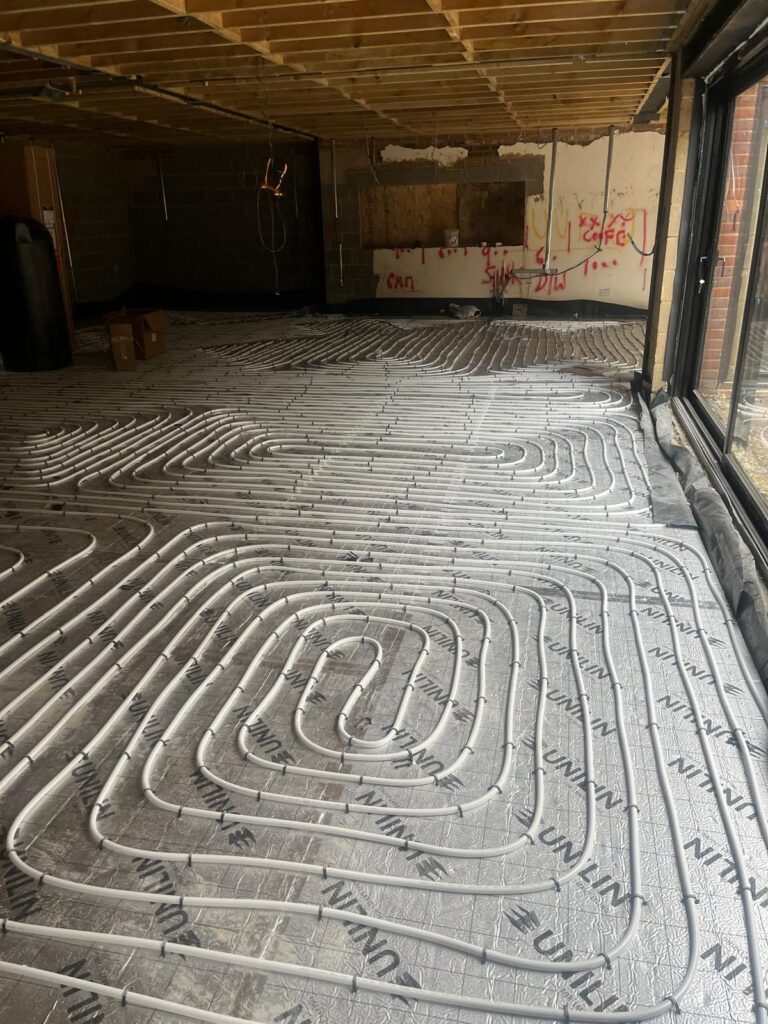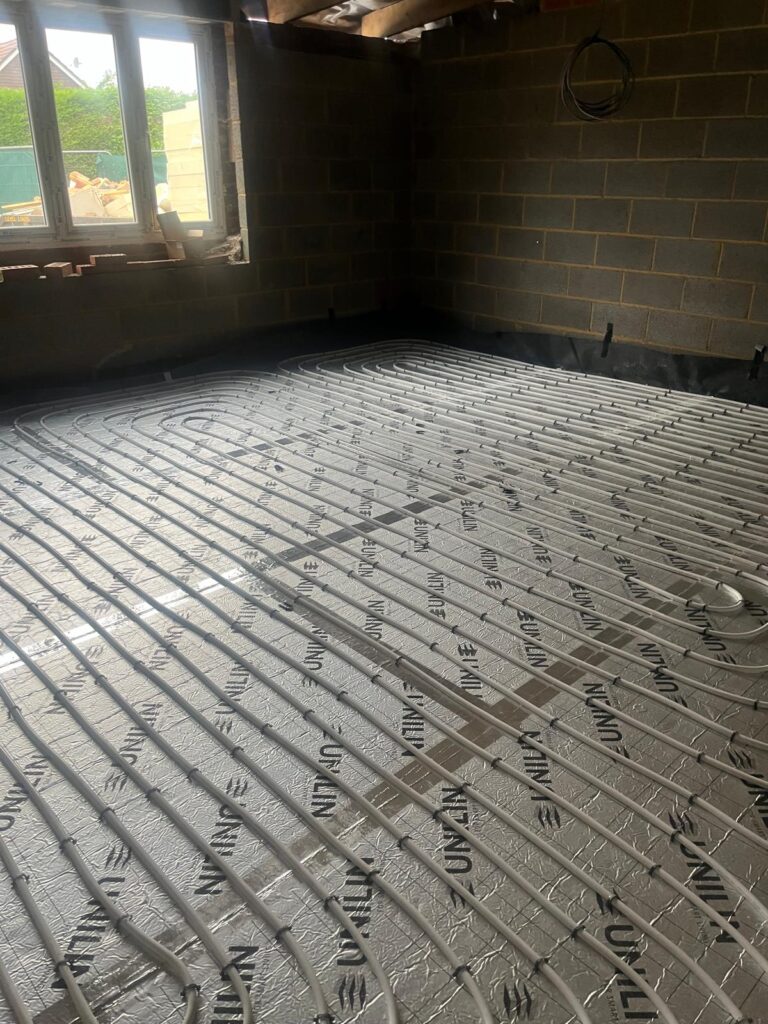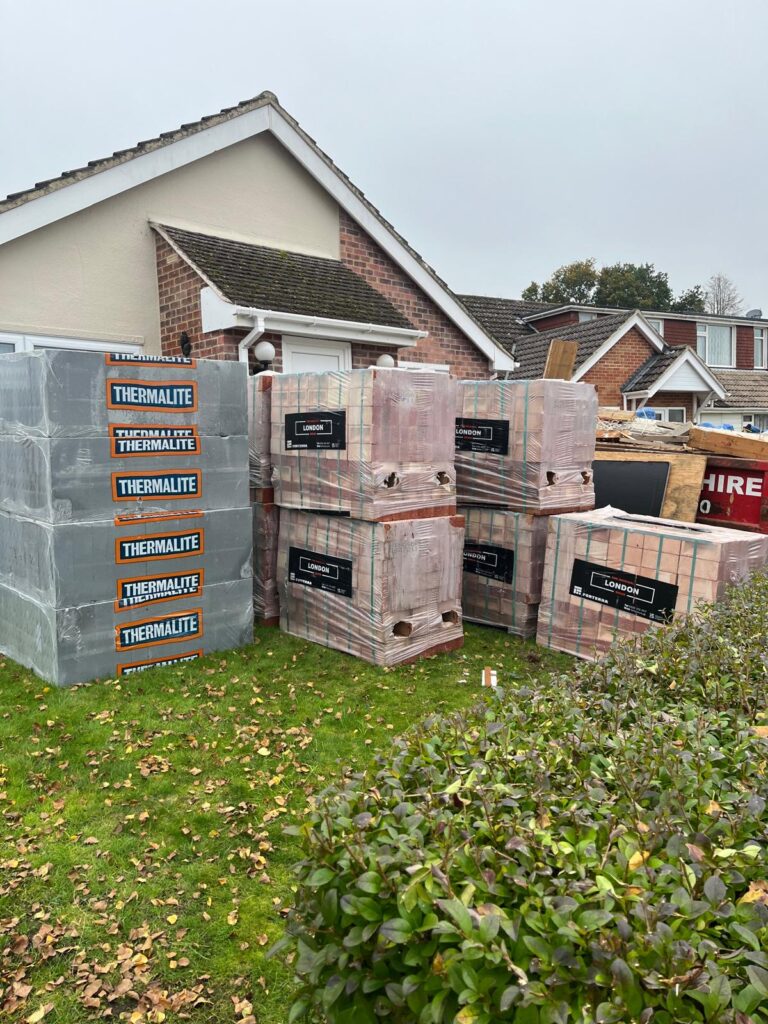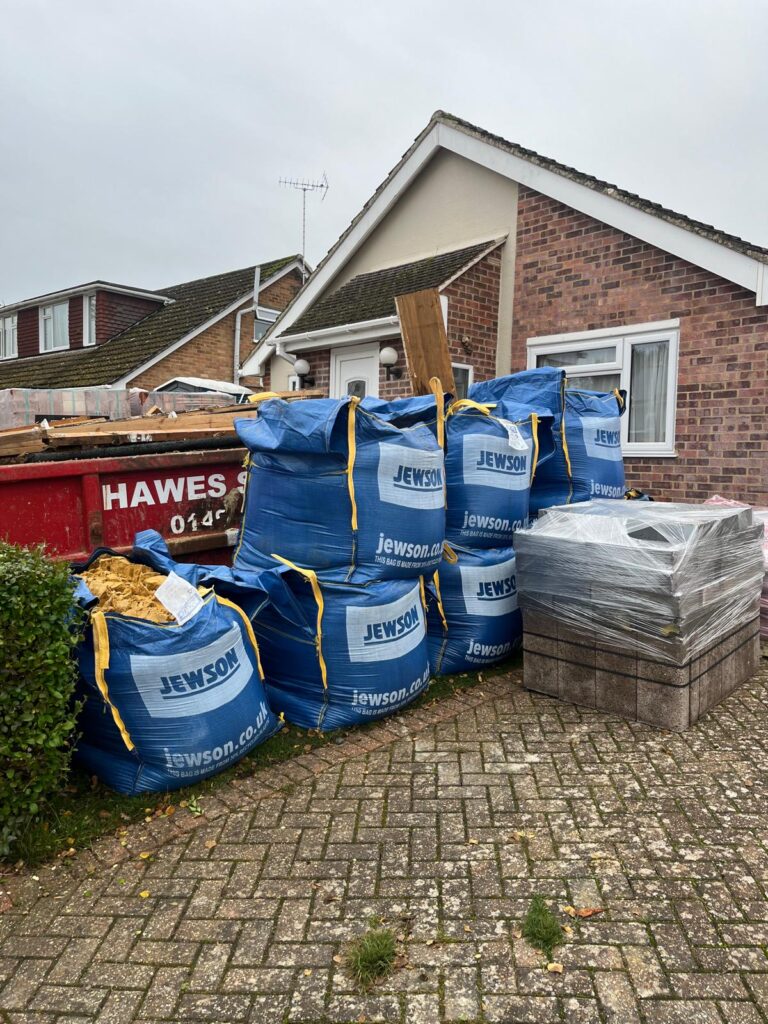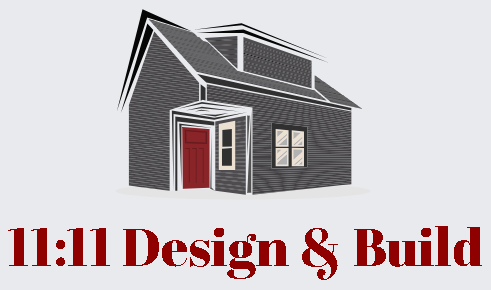Types of Underfloor Heating
There are two main types:
- Water Underfloor Heating:
- Uses a network of pipes embedded in the floor, circulating warm water.
- More energy-efficient over time, especially when combined with renewable sources like heat pumps.
- Typically requires a new build or major renovation for optimal installation.
- Electric Underfloor Heating:
- Uses thin electric cables laid beneath the floor.
- Easier to retrofit into existing homes.
- More expensive to run than water systems, especially for larger areas.
Project Considerations
- Floor Type:
- Solid Floors: Ideal for both water and electric systems. Requires a thicker screed layer.
- Timber Floors: More suitable for electric systems, as water systems can cause damage. Requires careful installation and insulation.
- Room Size and Layout:
- Larger areas generally benefit more from water systems due to their efficiency.
- Smaller rooms or extensions might be more suited for electric systems.
- Insulation:
- Proper insulation is crucial for both systems to maximize efficiency and minimize heat loss.
- Floor insulation is particularly important for ground-floor rooms.
- Thermostats and Controls:
- Smart thermostats allow for precise temperature control and energy-saving features.
- Zoning systems can control heating in different areas of the house independently.
Installation Process
- Preparation:
- Ensure the floor is level and clean.
- Install insulation boards if necessary.
- Laying the System:
- For water systems, lay the pipe network according to the design.
- For electric systems, lay the heating cables following the manufacturer’s instructions.
- Screed Layer:
- A layer of self-leveling screed is poured over the system to protect it and provide a smooth finish.
- Floor Covering:
- Install the chosen floor covering (tiles, wood, etc.) over the screed.
Benefits of Underfloor Heating
- Even Heat Distribution: Warms the room evenly from the floor up.
- Energy Efficiency: Can reduce energy consumption compared to traditional radiators.
- Improved Comfort: Provides a comfortable, draft-free environment.
- Allergy-Friendly: Reduces dust circulation, beneficial for allergy sufferers.
- Aesthetically Pleasing: No visible radiators, allowing for cleaner design.
Costs
- Water systems are generally more expensive to install but cheaper to run.
- Electric systems are cheaper to install but more expensive to run.
- Costs vary based on factors like room size, system type, and additional features.
